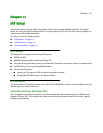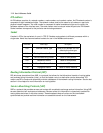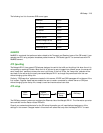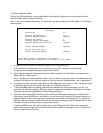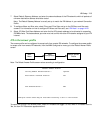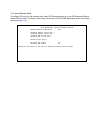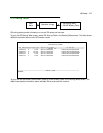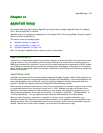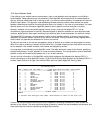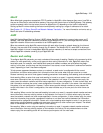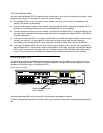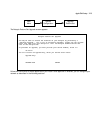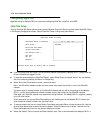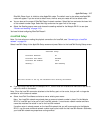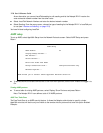
AppleTalk Setup 12-1
CC
CC
hh
hh
aa
aa
pp
pp
tt
tt
ee
ee
rr
rr
11
11
22
22
AA
AA
pp
pp
pp
pp
ll
ll
ee
ee
TT
TT
aa
aa
ll
ll
kk
kk
SS
SS
ee
ee
tt
tt
uu
uu
pp
pp
This chapter discusses the concept of AppleTalk routing and how to configure AppleTalk Setup for a Netopia
R2121 with the AppleTalk kit installed.
AppleTalk support is available as a separate kit for the Netopia R2121 Dual Analog Router. Skip this chapter if
you do not have the AppleTalk kit.
This section covers the following topics:
■ “AppleTalk networks” on page 12-1
■ “Installing AppleTalk” on page 12-4
■ “Configuring AppleTalk” on page 12-6
Note: All changes to AppleTalk options require a restart to take effect.
AppleTalk networks
A network is a communication system that connects computers to share information using network services,
such as electronic mail, print spoolers, and file servers. Information is transferred over a cabling system or
WAN using a common set of protocols. You can think of the cabling system as an organization of cities, streets,
and buildings and the protocols as the method of sending letters or packages, as illustrated on the following
pages. A cable is the physical medium (for example, twisted pair or coaxial) over which information travels from
one device to another.
AppleTalk protocol
AppleTalk is a protocol set for local area networks developed by Apple Computer. While initially applied to the
LocalTalk cabling system for connecting Macintosh computers and LaserWriters, it has been expanded to use
other cabling systems, such as Ethernet, as well as the dial-up telephone networks and packet switching
systems. LocalTalk was originally known as the AppleTalk Personal Network system.
Each computer or peripheral device (printer, client, file server) connected to a network is called a node and has
a unique node address, which can be any number from 1 to 254. Whenever you open the Chooser or any
application that communicates with other computers on your network, your application compiles a list of all
node names and addresses. All you see are the names --- for example, “Paul’sMac,” “TechSportsWriter,” or
“2nd Floor AppleShare” --- but your application also knows the node addresses of all these devices.
When you send information, commands, or requests to a printer, server, or another workstation, your
application formats the information into units known as packets. It then attaches the correct address to the
packets and sends them to the AppleTalk software on your computer, which forwards the packets across the
network. Packets also include a return address, so the receiver will know where to reply.



